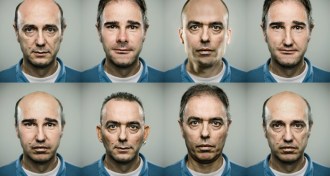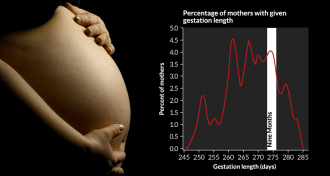Humans
Sign up for our newsletter
We summarize the week's scientific breakthroughs every Thursday.
-
 Humans
HumansBabies learn words before birth
Brain responses suggest infants can distinguish distinct words from altered versions that they learned in the womb.
-
 Psychology
PsychologyBehavioral research may overstate results
'Soft' sciences inflate support for what scientists expected to find, data check suggests.
By Bruce Bower -

-
 Psychology
PsychologyFamiliar faces
"Super recognizers" never forget a visage, an unusual ability that can be put to good use.
By Susan Gaidos -

-

-
 Psychology
PsychologyWhat Makes a Hero?
The Surprising Science of Selflessness by Elizabeth Svoboda.
By Sid Perkins -
 Astronomy
Astronomy‘Space beads’ push back origins of iron working
Ancient Egyptians used advanced techniques to make beads out of 'metal from the sky.'
By Bruce Bower -
 Psychology
PsychologyBlood marker may predict suicide
People who killed themselves had higher levels of a gene involved in cell death.
-
 Health & Medicine
Health & MedicinePower of sugar may come from the mind
Only people who believe exertion zaps willpower get a boost from glucose.
-
 Life
LifeYears or decades later, flu exposure still prompts immunity
New forms of influenza viruses can spur production of antibodies to past pandemics in people who lived through them.
-
 Psychology
PsychologyHighlights from the American Sociological Association annual meeting
Research on social media's reluctant users, marital ideals and single parenthood and intimate victims of cybernastiness presented August 10-13 in New York City.
By Bruce Bower